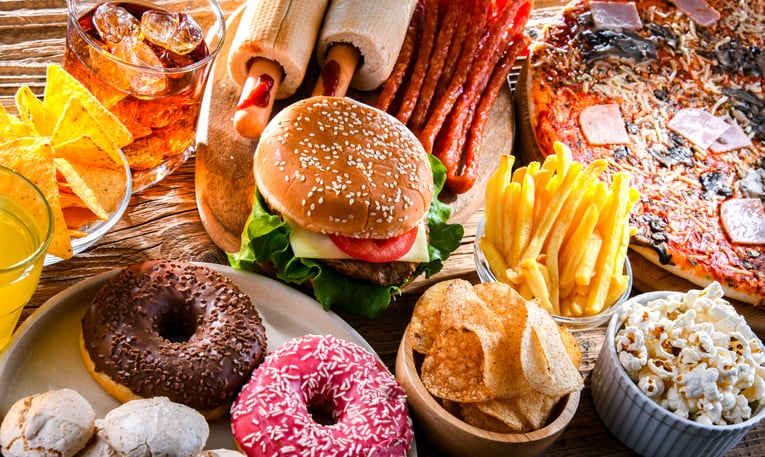Sensory science is more important than ever in today’s quickly changing food and beverage landscape, believes Nathaniel Davis, a British-born Swiss-based sensory research professional.
He’s spent over 25 years giving insights to help food business achieve success. Trends come and go, he told FoodNavigator, and so a better understanding of sensory marketing and the role of emotion and flavour in NPD can help the sector adapt to newer shifts.
“The failure rate of new food products is between 70 to 80%,” said Davis. “Reducing that figure is vital. The difference between a product success or failure is often how well it can deliver positive emotions to the consumer.”
The emotional delivery of the product comes from a mass of factors including its branding, positioning, packaging, taste and flavours, aftertaste, and degree of satiation.
Sensory science aims to enable formulators to identify what elements of the consumer consumption experience prompt which emotional, subconscious, reactions and why, Davis told us. This is crucial in order to ensure successful product performance in today’s competitive marketplace characterised by too many similar products looking to differentiate.
“Flavours, textures and aromas all produce powerful responses within consumers and trigger powerful emotions with longer-lasting memories than say for example visual cues,” he said. “For example, aromas from both retronasal olfaction and orthonasal olfaction are strong stimuli, with the memory of scents lasting longer than visual memories.”

Cutting the sugar, fat and salt but not the ‘emotional' reward
Reformulation is one trend that could successfully leverage sensory science. “The challenge is to reduce sugar, fat and salt but not the reward,” explained Davis. But the problem is when you take out sugar from a product it impacts all the other types of individual ingredients differently. The full version has all the personality, flavour, a better texture, and body. However, the newer one does not have the same power. Have you got to resolve each flavour individually? “The solution I find is to reveal the key emotional benefits for consumers of your original product,” said Davis.
Food and drink can drive significant emotions within us, which are usually formed in infancy. Certain tastes can trigger certain feelings and can often take us back to a very comforting time. A lime or tangerine flavour might suddenly whisk an adult back to happy memories of childhood, for example. Strong emotions are not always formed in childhood. A certain flavour might spark memories of falling in love. An exotic note may evoke far-flung places once visited.
“A sweet orange taste can remind consumers of mornings, fun outdoors, youth or freedom,” said Davis. “A well-trained flavourist therefore uses these to trigger these learned responses.”
He urges his students in the food industry to use this phenomenon to help their products gain acceptance. Regarding reformulation, he stresses that identifying “the prime tastes, mouth feels, and carbonation levels that trigger the most positive emotions and that deliver delight and deliciousness” can ensure an “honourable version of the original”.
Sensory science and the plant-based sector
Sensory science can help overcome barriers of rejection in the plant-based food sector. For example, we regularly hear that people want to eat more healthily and more sustainably and that the answer is plant-based foods. Plant-based food manufactures are, however, experiencing a rough time (meat alternatives supplier Plant & Bean and the Meatless Farm brand are recent casualties in the UK, for example).There are several reasons for this, but one is because some products just do not meet the consumer’s requirements. Part of the problem, according to Davis, is that the consumers these products are targeting – those who want to eat less meat and dairy for health, ethical or environmental reasons – lack a historic emotional connection with these types of products.
There are, however, ‘hardcore’ buyers of these products for whom taste and texture is less important than ethics or the environment. The trick then is to give the former consumer group the same emotional incentive as the latter.
“Properly applied sensory research will find the beginnings of why there is a gap between light users and fully engaged users,” explained Davis. For light users, these products will have had little role in their emotional history. “It won't be involved in major occasions in their life. It will not be the same.” Product formulators, therefore, will need to educate the light users with the ‘found emotions’ of the heavier more engaged users. “Any successful approach to defining the ‘right taste’ of plant-based meat products must start by understanding the consumer journey – how ‘taste’ is understood, valued, and assessed with the category. Formulators need to identify what consumers want, at different times of day, and why’ and how that can be articulated.”

“Only once this benchmark articulation of what good taste means emotionally and psychologically is defined the route to delivery can be understood. I don’t think all the companies have got this complex understanding yet. They lack a full understanding of the heart of what the taste is all about.”
The challenge for food formulators, therefore, is how to load new food categories with emotional memories and put ‘new memories’ into new products to help them gain acceptance.
Caveats exist, however. Success can indeed be found in brands taking bolder risks and launching products that may not necessarily cater to everyone's tastes, explained Davis.
These exceptional brands typically have a core group of passionate enthusiasts, even if their numbers are not vastly high. Their early devoted enthusiasts help sustain the brand's presence in the market, while others gradually develop a taste for it. As this happens, the brand gains widespread popularity. A prime example of this phenomenon is Red Bull, whose distinct taurine flavour has become synonymous with the energy drinks category.
Food and mental health
Sensory science can be further used in newer products aiming to bringing ‘a sense of peace’ to today’s consumers coping with rising levels of ‘low-level anxiety’. Consumers, reckons Davis, were once happy with either healthy food or great tasting food. Now, more consumers want healthier solutions to indulgence. The pandemic triggered an increase in the incidence of anxiety and depression worldwide. As such, the products we choose and use will be affected by this. Post-pandemic consumers are consequently using new products or old products in different ways in order to combat their anxiety.
One example is chewing gum innovation.
“Chewing helps lower stress levels, and anxiety and boosts attention,” said Davis. “Ginger gum with the zest of fresh ginger provides Trigeminal nerve stimulation sensations once established are preferred and often instigate a repeated desire. Some brands are infusing their gums with CBD to enhance their anxiety-beating effects. While others are using B vitamins and L-theanine to shift moods and keep alert.”
Sensory science can help policymakers too
Davis also believes that greater knowledge about sensory science can help policymakers as well as food makers. For example, in the UK there is new HFSS legislation restricting the marketing of junk food products in an attempt to combat obesity. But Davis suggests a more holistic approach that considers sensory science could prove a more effective approach.
Vegetable-growing and cooking classes on the school curriculum could be better than blunt, top-down policy measures, for example.
“The main problem is one of sensory and stimulation deprivation,” he said. “Much of today's processed HFSS foods often lack strong, natural, and fresh flavours they are too simple, and the textures are bland. The way food is prepared nowadays doesn't allow for the creation of positive emotions associated with the cooking art and process - Chinese, Korean, and Italian cooking involves cooking, and food preparation that takes time, this would release a multitude of activities, noises, and aromas.”

In this way, the meal is extended in its duration forward and the stimulation with it. “Likewise, having all-seated mealtimes and not dining around the TV is paramount. Sitting around a dinner table is a turnkey solution - not only do we taste, and experience more and not eat mindlessly but children may miraculously start to talk and share their issues of the day they encountered.”
Food growing in schools leads to children eating more fruit and vegetables, he added. “As it connects our young with positive emotions associated with the tastes, and textures from fresh fruit and vegetables which require time for acquiring. There is a joy and sunk cost in the process. Children tend to follow through on pushing through to acquiring the tastes after their efforts of planting, watering, watching their plants grow, and picking as they invested real time and effort.”
Hastening stalling innovation
He further believes that standardising sensory jargon and terminology could drive innovation in the industry. As it stands, too often, there is misunderstanding between different actors of the value chain from sales to creation, R&D or even production to talk the same emotional and senses languages. A standardised terminology that is applied for taste and aroma development would help.
“In an area where the technical language of flavour and food technology is filled with organoleptic and R&D speak, it is separated by a chasm from the language of the marketer and consumer. As such, a standardised vocabulary is the required bridge between what emotions are required to be delivered to the consumer through the eating or drinking experience, and the technical team which provide the enhanced product or improvement.”





